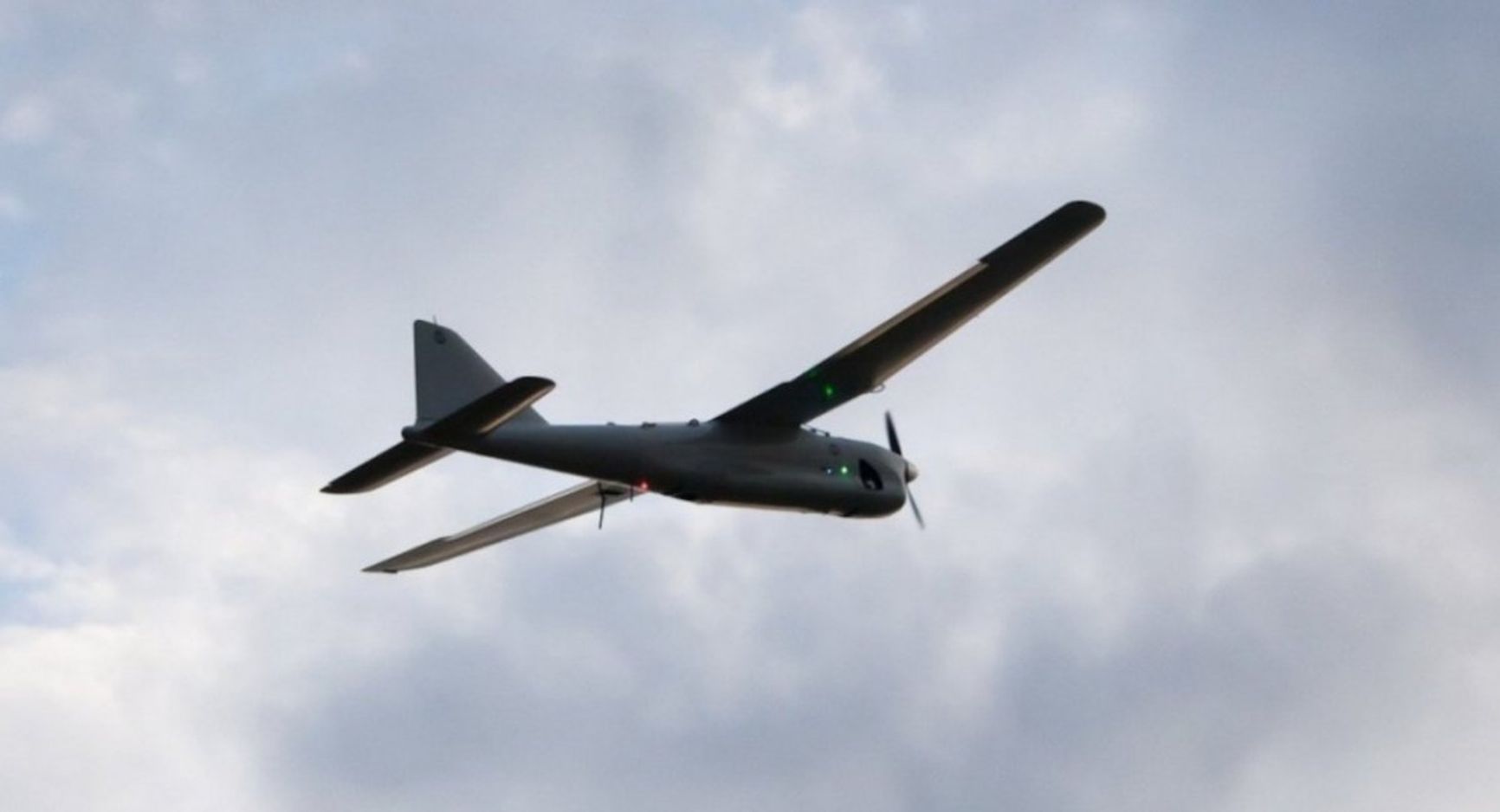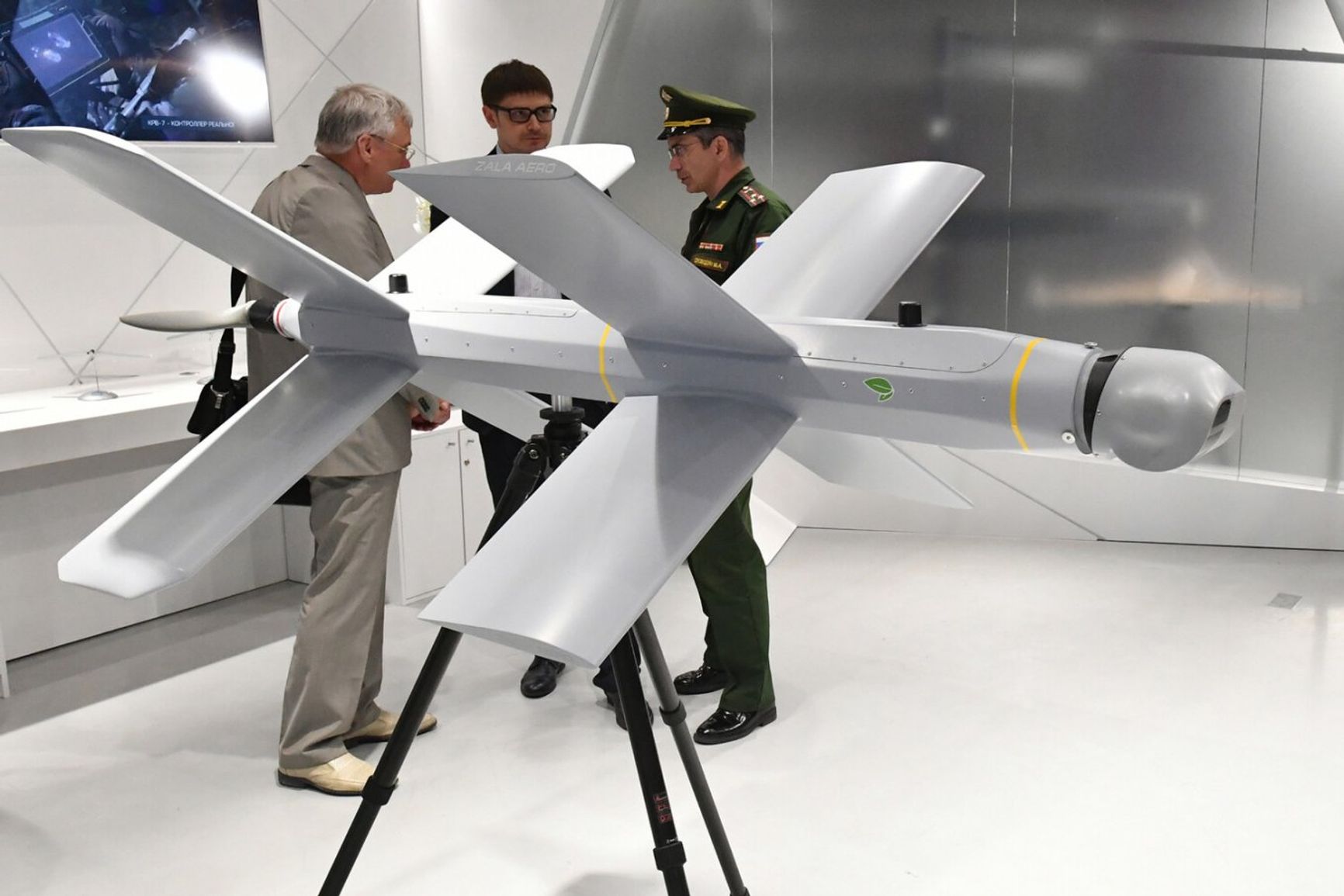

Unsanctioned entities are helping Russia’s drone manufacturers procure the components they need to keep the Kremlin’s war machine running, even as its losses in Ukraine continue to mount. Two primary offenders, Special Technology Centre (STC) and Zala Aero, receive components from more than 70 unsanctioned firms to arm Russia’s forces in Ukraine with drones and loitering munitions.
Content
What complex webs we weave
Chokepoints: Energon
Chokepoints: Studia Pixagio
Solution: A network-centric approach
The effects of this gray-zone trade are felt every day in Ukraine, and they are frequently seen in footage released by the Russian Ministry of Defense. The videos typically begin with a choppy aerial view of a field. The target soon becomes clear: in this case, a Western-supplied M777 howitzer firing at a Russian target somewhere over the horizon. The gun’s Ukrainian crew busily fires and reloads, unaware of the Russian drone circling overhead.mThe unmanned aerial vehicle carrying the camera is an Orlan-10 from Russia’s Special Technology Centre (STC). At an altitude of 1,500 metres, its small petrol engine — made by the Japanese company Saito — is inaudible, all the more so amid the crumps of artillery fire.
Suddenly the viewpoint changes on the video changes to a camera that is travelling towards the gun and its crew. Crosshairs focus on the gun, and a bounding box appears around it, drawing closer by the second. At the last moment, the video switches back to the original view in time to show a Lancet-3 from Zala Aero slamming into the target. Something similar has happened more than 1,000 times on the Ukrainian side of the front, removing from the battlefield lives and equipment that cannot be replaced.

A Lancet loitering munition, manufactured by Zala Aero
Source: Screenshot / Kalashnikov Media
Two of the companies that have made significant contributions to the development of Russia's drone fleet — STC and Zala Aero — are sanctioned in the United States, the United Kingdom, and the European Union. Nevertheless, the Russian firms have proven capable of maintaining both the quantity and quality of the weaponry they produce for their country’s war machine. It is a feat that could not have been accomplished without the cooperation of a network of suppliers that has thus far evaded the scrutiny of regulators.
STC is based in St Petersburg, Russia. Leaked financial data indicates that despite the Orlan-10’s reliance on imported parts like the Sony cameras and Controp chips that are used to control those cameras, and despite STC’s status as a sanctioned entity, it continues to do business with key elements of the Russian military-industrial complex. In 2023 alone, STC registered a total of $340,358,850 in orders from the Russian Ministry of Defense, various Russian military units, and Russian military research institutes that play a leading role in the development of the country’s drone fleet.

The Orlan-10 UAV from Russia’s Special Technology Centre (STC)
Based in the central Russian city of Izhevsk, Zala Aero has received over $400 million in orders from the same Russian military entities avail themselves of STC’s services. Despite its position on the sanctions list, Zala Aero has continued to produce Lancet loitering munitions that use Western components, including the Nvidia Jetson TX2 computer that is designed to run artificial-intelligence algorithms.
What complex webs we weave
The Zala Aero Group consists of two core manufacturers: Zala Aero and its affiliate Aeroscan, which was owned by Nikita Zakharov (the son of the company’s founder) until at least October 2023. The group has multiple intertwined entities that are involved in its unmanned aerial vehicle (UAV) production process, as Aeroscan’s financial records reveal. Its top suppliers include a sanctioned company called OMP, which is owned by Maksim Kotelnikov, who has been identified as an employee of Zala Aero and Aeroscan. Its network also includes: Emergency Digital Solutions (EDS), owned by Nikita Zakharov until at least October 2023; Gauss, located at the same address as EDS; and Servis-SN, based at Aeroscan’s new production base in Izhevsk. In addition, EDS has been found to actively trade with RTK and RTTs, two entities that were owned by Zakharov as of October 2023. All of these entities, save for OMP and EDS, have limited online footprints and are not subject to sanctions.
Both Zala Aero and Aeroscan share OMP and Spetstekhnotreyd as top suppliers, with total transactions registering in at $105.2 million and $1.7 million respectively. Both entities are sanctioned in the U.S. and E.U., but they continue to regularly import aluminium and carbon fibre products from China. For example, OMP has imported $2.8 million in aluminium products from Bestop Global and another $5.6 million from Star Rapid Manufacturing. The former has already been included on the sanctions list of the U.S. Department of the Treasury, but the latter has not.
According to 2023 commercial trade data, OMP has also received at least 31,066 multiphase AC motors worth $2.8 million from Chinese drone manufacturer Jiangxi Xintuo Enterprise. Despite the sanctions against Zala Aero (a Tier 1 supplier that delivers finished products to its customers) and against OMP (a Tier 2 supplier that provides critical components to the manufacturer), the Russian military is still receiving the drones and munitions necessary to continue prosecuting its war in Ukraine. Clearly, further sanctions across the network are necessary to degrade the flow of Lancets and reconnaissance drones to the front line.
For its part, Aeroscan appears to rely on a network of suppliers for microelectronics that includes both sanctioned and unsanctioned entities. For example, Aeroscan continues to do business with the U.S.-sanctioned Sputnik-Spetspostavka (Sputnik-SP) and Inelso, and also with unsanctioned entities including Timechips and Elektroradiokomponenty Severo-Zapad. Timechips, which has also fulfilled some minor orders for STC, claims on its website that it specializes in the supply of imported military and dual-use products to enterprises in the Russian military-industrial and aerospace sectors. It adds that it is an official supplier in Russia for the Chinese company Shenzhen Startek Electronic Technology.
It is not clear how Timechips imports the systems that it then provides to Aeroscan, as there is no import data available for the company. It may use other intermediaries to bring chips into Russia before passing them along to Aeroscan. The examples outlined above provide only a rough outline of the complexity and scope of the supply networks that Russia’s military-industrial complex relies on in order to evade sanctions. Russian companies understand that it is all but impossible for Western regulators to trace every thread in the spider web of suppliers that, when woven together, continues to route all of the necessary components to the manufacturing centers that keep the Russian arsenal stocked with critical munitions. This is why focusing more scrutiny on the activities of central companies themselves — STC and Zala Aero chief among them — might be a more effective approach.
Chokepoints: Energon
STC and Zala Aero have developed complex networks of suppliers that help them evade sanctions, that much is clear. Still, those networks inevitably contain chokepoints, and one of them is the St. Petersburg-based Energon.
Registered in 2017, Energon is a distributor of microelectronics and composite materials, including fibreglass and carbon fibre procured from non-Russian entities such as Atmel, Altera, and Xilinx. It is also an official distributor of KingMax Hobby, a Chinese company that distributes components for remote controlled vehicles. The company also claims to be an authorized distributor of R&G Faserverbundwerkstoffe, which provides raw materials and finished products into the carbon fibre and resin fibre market. Many of its products are stated to be applicable for use in “model aircraft.”
Between January and September 2023, Energon recorded a total of $9 million in sales, with $6.6 million of that figure going to Aeroscan and another $1.5 million to STC. Over the same period, records show that Energon imported $7.3 million in products — largely from O.G. Services FZE, a UAE company, and from the German firm Hydro-Funk GMBH.
The volume of transactions in 2023 is all the more notable when compared with Energon’s revenues for the entirety of 2022: only $4.1 million. Given the enormous growth in the quantity of drones used along the frontlines in Ukraine over the past year, it stands to reason that Energon is heavily involved in supplying Russia’s drone industry. A wider analysis of other Russian drone manufacturers indicates that Energon is potentially a single point of fragility that could be targeted to deny both Zala Aero and STC access to the materials necessary to build their drones.

A Russian Lancet loitering munition stuck in a metal net deployed over a Ukrainian military Krab ACS, January 2023, Ukraine
Source: Kriegsforscher
Chokepoints: Studia Pixagio
Also based in St. Petersburg, Studia Pixagio was founded in 2015. It is linked to LLC Rustekh-TD, a major supplier of STC via its sister company, LLC MMA AIST, which holds 50% of Rustekh-TD. Leaked financial records indicate that between January and September 2023, Studia Pixagio regularly sold its wares to Rustekh-TD, which itself received more than $1.5 million in orders from STC between January and September 2023.
In addition, commercial trade databases reveal that Studia Pixagio may be the only Russian company importing the Japanese-made Saito engines that are used to power the Orlan-10. Studia Pixagio began to import such components at a notable scale only in September 2022, and it had received a total of $3.96 million worth of shipments by December 2023. In 2023 the company imported a total of 150 engines, along with electronic components and parts for the assembly of telecommunications equipment made by manufacturers including Schroff GmbH, Microchip Technology, and Vicor. Its more significant suppliers include $2.5 million in aluminium and radio products from Rui En Koo Technology, which utilizes components from both Schroff GmbH and Interpoint.

The Lancet-3 loitering munition, manufactured by Zala Aero
Solution: A network-centric approach
The Russian drone industry is critical to its war in Ukraine. Without unmanned aerial vehicles like the Orlan-10, Russian forces would be unable to correct their artillery fire, which caused 70% of Ukraine’s casualties in 2023. In addition, loitering munitions like the Lancet provide the accuracy and range necessary to target Ukrainian vehicles that attempt to evade the mass of Russian artillery bombardments. Russia’s artillery has likely been its most effective weapon in this war, and combining the brute force of shellfire with the reconnaissance and precision strike capability of drones has only made it deadlier.
However, rather than attempting to take down the Russian drones along the front in Ukraine, the above analysis suggests that there are several key choke points that can be exploited to prevent many of the Orlans and Lancets from making it to the battlefield in the first place. Disrupting the activities of Energon and Studia Pixagio appears to be the most promising place to start; by preventing their suppliers, including those named above who may not be aware of how their products are used, from trading with them. Beyond that, sanctions against the wider networks feeding Zala Aero and STC, coupled with an enhanced focus on enforcement and monitoring, could degrade Russian offensive capabilities severely enough to finally bring an end to the war into sight.